Management and control of QoE
A significant amount of research has been devoted to understanding, measuring, and modeling QoE for a variety of media services. The next logical step is to actively exploit that accumulated knowledge to improve and manage the quality of multimedia services, while at the same time ensuring efficient and cost-effective network operations. Moreover, with many different players involved in the end-to-end service delivery chain, identifying the root causes of QoE impairments and finding effective solutions for meeting the end users’ requirements and expectations in terms of service quality is a challenging and complex problem. The goal of QoE management may be related to optimizing end-user QoE (end-users' perspective), while making efficient (current and future) use of network/system resources and maintaining a satisfied customer base (providers' perspective). Of particular interest is the exploitation of AI and ML techniques in the context of managing QoE for advanced interactive and immersive multimedia services provisioned over 5G networks.

Different metrics and optimization objectives driving QoE management
User-centric service and application management focuses on QoE as perceived by the end user. Thereby, the goal is to maximize QoE while ensuring fairness among users, e.g., for resource allocation and scheduling in shared systems. We propose the definition of a novel generic QoE fairness index F, and argue that neither QoS fairness nor Jain’s fairness index meet all of the desirable QoE-relevant properties which are met by F. Consequently, the proposed index F may be used to compare QoE fairness across systems and applications, thus serving as a benchmark for QoE management mechanisms and system optimization. We further study how the choice of different QoE metrics, the importance of fairness, and the variations between users, can affect optimal QoE management choices for service providers.
Selected publications:
- T. Hoßfeld, P.E. Heegaard, L. Skorin-Kapov, M. Varela. "Deriving QoE in systems: from fundamental relationships to a QoE-based Service-level Quality Index". Quality and User Experience 5, 7 (2020). https://doi.org/10.1007/s41233-020-00035-0
- L. Skorin-Kapov, M. Varela, T. Hoßfeld, K-T. Chen, "A Survey of Emerging Concepts and Challenges for QoE Management of Multimedia Services", ACM Transactions on Multimedia Computing, Communications, and Applications (ACM TOMM), vol 14, issue 2, May 2018. (online appendix to paper available here)
- T. Hoßfeld, L. Skorin-Kapov , P. Heegaard, M. Varela, "A New QoE Fairness Index for QoE Management", Quality and User Experience, Springer, 2018, open access: https://doi.org/10.1007/s41233-018-0017-x.
- T. Hoßfeld, L. Skorin-Kapov , P. Heegaard, M. Varela, Definition of QoE Fairness in Shared Systems, IEEE Communication Letters, Vol. 21, Issue 1, Jan. 2017, available online, DOI: 10.1109/LCOMM.2016.2616342
- T. Hoßfeld, P. Heegaard, L. Skorin-Kapov and M. Varela. "No Silver Bullet: QoE Metrics, QoE Fairness, and User Diversity in the Context of QoE Management", in proc. of 9th International Conference on Quality of Multimedia Experience (QoMEX 2017), Erfurt, Germany, May 2017.
- C. Moldovan, L. Skorin-Kapov, P. Heegaard, T. Hoßfeld;, "Optimal Fairness and Quality in Video Streaming With Multiple Users", Proc. of ITC 30 (International Teletraffic Congress), Sept. 2018, Vienna, Austria.
Cross-layer QoE management
We study cross-layer approaches where application-level user- and service-related knowledge is utilized for various scenarious, such as QoE-driven admission control, resource allocation, and path optimization. We have proposed a Quality Matching and Optimization Function Application Server (QMO AS) which calculates feasible service configurations based on application-specific parameters, providing both an optimal configuration, and several sub-optimal ones (resulting in a so-called Media Degradation Path, or MDP). The MDP specifies a mapping between session parameters, resource requirements, and corresponding user experience quality levels. The QMO AS is included in the network along the signaling path and interfaces with policy and resource allocation entities to support QoE-driven resource management.
Selected publications:
- K. Ivešić, L. Skorin-Kapov, M. Matijašević. "Cross-layer QoE-driven Admission Control and Resource Allocation for Adaptive Multimedia Services in LTE", Journal of Network and Computer Applications, Elsevier, doi:10.1016/j.jnca.2014.09.010, available online Sept. 2014
- R. Schatz, M. Fiedler and L. Skorin-Kapov. "QoE-based Network and Application Management". in "Quality of Experience: Advanced Concepts, Applications and Methods", T-Labs Series in Telecommunication Services, S. Möller and A. Raake (eds.), Springer, March 2014, pp. 411-426.
- O. Dobrijevic, A. Kassler, L. Skorin-Kapov, M. Matijasevic. "Q-POINT: QoE-Driven Path Optimization Model for Multimedia Services", 12th Intl Conf. on Wired and Wireless Internet Communications, in Lecture Notes in Computer Science, vol. 8458, Springer, pp. 134-147, 2014.
- L. Skorin-Kapov, K. Ivesic, G. Aristomenopoulos and S. Papavassiliou, "Approaches for Utility-Based QoE-Driven Optimization of Network Resource Allocation for Multimedia Services", in "Data Traffic Monitoring and Analysis: From Measurement, Classification and Anomaly Detection to Quality of Experience", Lecture Notes in Computer Science, Vol. 7754, Springer Computer Communications and Networks series, 2013, pp. 337-358
- A. Kassler, L. Skorin-Kapov, O. Dobrijevic, M. Matijasevic, P. Dely. "Towards QoE-driven Multimedia Service Negotiation and Path Optimization with Software Defined Networking", Proc. of IEEE SoftCOM, Sept. 2012.




 Pristupačnost
Pristupačnost